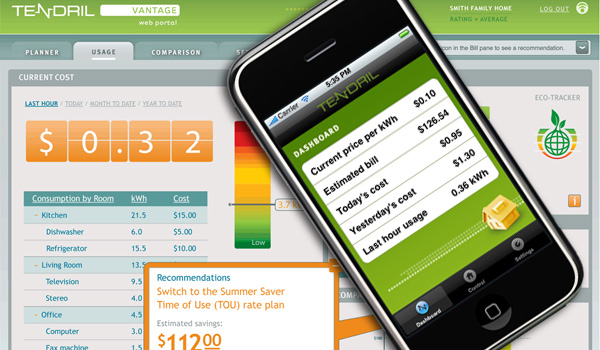Swapping Mental Energy for Carbon Emissions
Sunday, May 2nd, 2010Designing artifacts that help us sustain positive behavior change is a grand challenge problem for cognitive design. Often what is required is a wrap-around or makeover of a new technology or intervention that is failing to produce the behavior change that was expected. Take for example, electronic health records. Just implementing the technology does not lead to the changes in clinical and patient behavior needed to improved safety, better health outcomes and more efficient operations.
 For a more global example, consider the new technologies for personal energy management. I will save energy and help the environment (lower carbon emissions) if I know more about how much energy I am using, which appliances are using it efficiently or not and how my consumption compares to others in my neighborhood and various social networks.
For a more global example, consider the new technologies for personal energy management. I will save energy and help the environment (lower carbon emissions) if I know more about how much energy I am using, which appliances are using it efficiently or not and how my consumption compares to others in my neighborhood and various social networks.
The New Scientist has an excellent article, Innovation: Only Mind Games will make us save power, that discusses these new technologies and the psychology that surrounds them. The author describes both wrap-around and makeover designs that are emerging and offers some insights into the mind of consumers when it comes to saving energy. The insights include:
- Economic savings are too small to motivate behavior change
- Peer pressure is a relevant motivator. “We turn off the lights because we think others do”.
- Information about about energy use can help shift behaviors especially if it is personalized. One study indicated behavior change went from 5% to 80% when personalized information is used.
- Peer pressure and personalized information are not enough, producing only a 2-3% energy reduction when at least 10 times that is required.
- It may be necessary to use smart meters that monitor the environment and automatically adjust consumption and communicate with energy suppliers. See for example, the Adaptive Occupancy Control Technology.
The article cautions that these findings are based on a few preliminary studies and more research is required. Hopefully, some of that research will have a stronger cognitive design bent. More specifically, we need to explore how to apply related design patterns (e.g. successful behavior change efforts to make driving safer) and define better ways of creating mental energy (meaning, emotion, pleasure, etc.) to trade for behaviors that save energy in the home and lower carbon emissions.
